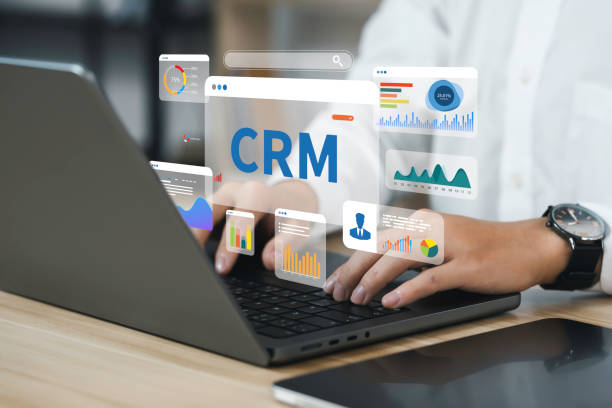Big checklists and policy binders can make anyone’s eyes glaze over, but your customer responsibility matrix (CRM) is far from boring. Think of it as a living agreement that actually dictates who does what — and when. For contractors in regulated industries, a well-aligned CRM with NIST SP 800-171 isn’t just a best practice. It’s your operational lifeline.
Core Structure of CRM Roles Mapped to NIST SP 800‑171
There’s a hidden framework beneath every effective customer responsibility matrix — and that’s the alignment of internal roles directly to the 14 families of NIST SP 800-171. But it’s not a copy-paste job. The structure needs to reflect not just your internal capabilities, but also how each security requirement is assigned across technical, administrative, and physical domains. Contractors often miss the opportunity to map responsibilities granularly, creating gaps in accountability that only show up during an audit or incident.
For instance, who manages the system access review for AC.1.001? It may sound like an easy assignment, but too many organizations hand it off vaguely to “IT” or “Security.” A proper CRM ties it to a named role — not a team — so that task ownership is always traceable. More importantly, it reveals dependencies between requirements and shows how a missing task in one area can ripple into non-compliance across several controls.
Shared Control Demarcation Between Contractor and MSP/MSSP
In hybrid environments, clarity around shared control responsibilities is often more confusing than helpful — unless your CRM is built to highlight those blurred lines. Contractors relying on MSPs or MSSPs to deliver core infrastructure or security services must understand where provider responsibility ends and customer accountability begins. That division isn’t always obvious unless it’s explicitly documented.
Take AU.2.042, which involves reviewing audit logs. If your MSSP collects and stores those logs, that doesn’t automatically mean they’re reviewing them. Your CRM should break this down: the provider handles aggregation and alerting, but internal personnel must review alerts and escalate incidents. Without that distinction, contractors often overestimate what the provider is actually doing — and that’s where compliance fails.
In‑Scope CMMC Level 2 Controls Reflected in CRM Responsibilities
Controls covered under CMMC Level 2 aren’t just more technical — they’re more interconnected. Your CRM has to evolve to reflect this complexity, showing not only who’s assigned to each control, but how responsibility shifts depending on context, such as cloud environments or third-party integrations. It’s not uncommon for a single control to require inputs from IT, compliance, and leadership.
Consider SC.3.177, dealing with encrypted communications. The CRM shouldn’t simply assign this to the network team. It needs to show who’s maintaining encryption standards, who’s validating vendor tools, and who’s responsible for monitoring compliance. That kind of detail isn’t just helpful for audits — it tells your organization how to work smarter by eliminating overlap and covering blind spots.
Evidence‑Ready Documentation Anchored in CRM Assignments
You don’t just need documentation — you need the right documentation tied to the right hands. If your CRM is doing its job, it doesn’t just show who’s responsible for a control. It also links that responsibility to the evidence required for validation. That means the CRM becomes a map not only for operations but also for audit readiness.
Let’s say you’re assigned to CM.2.062, which focuses on configuration changes. A CRM that includes associated artifacts — change logs, tickets, approval records — makes it easier to verify that the control isn’t just active, but provable. It shifts the CRM from a theoretical document to a functional compliance tracker that helps your team pass audits without scrambling to find paperwork.
Quarterly Review Cadence Ensuring CRM Currency
Too many organizations treat their CRM like a one-time deliverable. It’s not. Controls change, tech stacks evolve, and third-party contracts are updated — sometimes quietly. That’s why your CRM needs a built-in quarterly review process that forces updates, not suggestions. It becomes your check-in on operational drift.
This review should involve both technical staff and compliance leads. If there’s a policy shift or new tooling, the CRM needs to reflect that immediately. And if an assigned party leaves or changes roles, your CRM should catch that gap long before an auditor does. This kind of rhythm helps keep responsibilities fresh and actionable, not buried in SharePoint folders nobody opens.
CRM Integration into Incident Response and Access Control Policies
One of the smartest ways to operationalize your CRM is to integrate it into the policies your team already uses every day — especially incident response and access control. When the CRM is embedded into these workflows, responsibilities aren’t theoretical anymore. They show up in real time during events, ensuring people know what to do — and who to contact — under pressure.
Picture an insider threat incident. Your CRM should already spell out who monitors user behavior, who initiates the response protocol, and who handles notifications. Instead of wasting time figuring out roles mid-incident, you’re working off a playbook that’s already aligned with your compliance framework. The same applies to access provisioning: your CRM should connect control assignments to actual user lifecycle steps, not just broad policy statements.
Third‑Party Service Coverage Defined Through CRM Clarity
Contractors often forget how many third parties are actually part of their compliance scope. Your CRM should bring that into focus, identifying not just which vendors are in play, but how each one maps to security requirements. That way, you’re not blindly trusting service providers — you’re validating their role in your compliance picture.
If a cloud email provider handles spam filtering and malware defense, does that mean they’re responsible for all aspects of SI.1.210? Not necessarily. Your CRM needs to show where their SLA ends and where internal review begins. This not only prevents over-reliance, but also strengthens your supply chain governance, turning your CRM into a tool for proactive risk management.




